With the release of the first X-Men film in 2000, audiences not only witnessed the dawn of the modern day superhero film boom, but also the beginning of a complicated franchise that would span sixteen years and nine films. With X-Men: Apocalypse on the horizon, Kayleigh Hearn and a rotating cast of merry mutants are revisiting the X-Men films from the very beginning, and examining the comic book storylines that inspired them. What would you prefer, yellow spandex?
X-Factor #24-26, “Fall of the Mutants” (1987)
By Louise Simonson and Walter Simonson
Kayleigh: Our final X-Education installment features the X-Men spin-off X-Factor, which began in the 1980s as a vehicle for the five original X-Men (Cyclops, Beast, Angel, Iceman, and a newly resurrected, de-Phoenix’d Jean Grey), who trained a new generation of mutants while posing as mutant hunters. Today we’re looking at Louise and Walt Simonson’s run on the series, particularly one of the first line-wide “events” for the X-Men books, “Fall of the Mutants.” Louise Simonson is perhaps one of the most underrated creators in X-history, given her significant writing stints on X-Factor and New Mutants. Notably, she’s the primary creator of Apocalypse, and she wrote the arc that transformed carefree playboy Angel into the grim, blue-skinned Archangel–the impact of which is still felt in X-books to this day.
Max: The Simonsons’ run on X-Factor set up a ton of stuff that’s been a big part of the X-Men franchise’s DNA (how many RECENT X-stories revolve around Apocalypse or Angel’s Archangel side threatening to take over?). With X-Men: Apocalypse out, it’s great that Louise “Weezie” Simonson is starting to actually get credit for how much she establishes here. These three issues were kind of all over the place for me: Louise’s dialogue here doesn’t totally work for me but you can’t really argue with the plotting she lays down. Walt Simonson’s art here isn’t quite the dizzying heights of his amazing Thor run, but there are some real gems here (like that splash panel of Apocalypse showing off Archangel).
Kayleigh: Louise Simonson edited Claremont’s Uncanny X-Men run before taking over X-Factor, and there’s definitely some of that “only in the ’80s” verbosity here, like in the scene where Cyclops is talking to Jean Grey and unraveling his long, complicated history with his first wife, Madelyne Pryor (who was actually Jean’s clone. See? Complicated). But I genuinely enjoy the characterization in this run, and how she develops the personalities of the five original X-Men (who can come across as very bland in the wrong hands). Jean Grey reaching out to Famine because she knows the Horseman is really a disturbed teenage girl is a nice moment. And that splash page you mentioned, with Apocalypse introducing Archangel as “The fetid exhalation of the yawning grave”? Fantastic stuff.
Max: The thing about “Fall of the Mutants” is there’s SO MUCH going on! X-Factor have just realized that maybe posing as anti-mutant bounty hunters wasn’t the best way to help mutant-human relations, Beast has lost his intelligence due to plot contrivances that are way too complicated to get into and now talks like a New York Guido, Angel lost his wings (back in the Mutant Massacre) and is now a pawn of Apocalypse as the cold, murderous Archangel. It’s like the angst of the Claremont era dialed up to 11!
Kayleigh: “Fall of the Mutants” is the culmination of twenty-something issues of X-Factor, and it’s long-form storytelling we rarely get in comics these days. When comics are limited to six issue, trade-ready story arcs, you often don’t get deeply seeded stories like the year’s worth of comics that made Angel’s fall from grace such a tragedy. It would be easy, and perhaps reductive, to name Archangel as an example of the “grim and gritty” 1980s where lighthearted characters got dark makeovers. Angel was a pretty static, generic “rich playboy” superhero until he became Archangel, and I’m not surprised comics creators keep bringing out his inner darkness.
Max: Angel’s powerset has historically been a big hurdle for writers—even Stan Lee gave him that weird net gun bazooka!—so you can’t really blame “knives for wings” sticking around given that it’s way cooler visually than “John Travolta’s Michael: The Superhero.” Having not read these comics in over a decade, I was surprised to see that Warren goes from a bad guy to pretty much a good guy within the span of two issues. Issue #24, on its own, is a great cliffhanger issue: Not only are X-Factor hopelessly outmatched by Apocalypse (rocking a big A on his belt and very goofy looking shapeshifting powers) and his horsemen, they find out Warren’s alive (and evil) and ON TOP OF THAT former Morlock/current X-Factor-er Caliban jumps ship to Team Bad Guys in exchange for Increased Killing Power.
Kayleigh: I love the seven page action sequence where the bottom panels are focused on Caliban, knocked aside and forgotten by both parties, silently watching the fight and making his choice. I really love Walt Simonson’s art; there’s a loose, free-flowing quality that really makes the action pop out at the reader. I read these issues in a trade that collected “Fall of the Mutants” tie-in issues, and the Captain America and Fantastic Four comics being published at the same time were drawn in a nearly identical boring Marvel house style that really puts Simonson’s fantastic work here in perspective. (One thing X-Men: Apocalypse needed, though, was Caliban trying to high-kick Poccy and getting his ass swatted like an insect.)
Max: I was really struck by how Apocalypse’s body language is so casual here compared to later stories where he’s basically Mutant Darkseid. Someone on Twitter remarked that he looks like a car salesman showing off a new model when Archangel first appears and it’s dead on. Apocalypse *smiles* in this comic; it’s wild. We should probably talk about how Power Pack is in this, right? Because Power Pack is in this. Cyclops hopes some of New York’s famous superheroes show up to help stop Apocalypse’s giant spaceship from crashing into Manhattan and uh…they get Power Pack, the baby superheroes.
Kayleigh: Jean’s like, “But they’re children!” and Cyclops is all, “It’s okay for children to fight the goddamn Horsemen of the Apocalypse because the Professor did it to us when we were kids.” I don’t think that was supposed to be hilarious, but it is. Louise Simonson co-created Power Pack, so it’s not that surprising they appeared so often in the ’80s X-books (remember that Wolverine and Katie Power Uncanny X-Men issue by freaking Barry Windsor-Smith??), but they are an odd reminder of a time when superhero comics were intended for children.
Max: It’s funny that “Fall of the Mutants” is basically the prototype for the kind of crossovers X-Men continues to do to this day. Why does Famine get teleported into America’s Bread Basket to fight Captain America and D-Man? Find out in that totally unrelated comic!
I wasn’t rock solid on the first two issues but I will say I dug the last issue, where X-Factor is running around Manhattan saving folks; it’s totally the kind of solid “breather” comic that makes ’80s Marvel/DC so good.
Kayleigh: X-Factor #26 is a really nice epilogue to the main action, filled with classic superheroics like Iceman building an ice ladder to save people from a burning building. One running plot thread was that X-Factor’s guise as mutant hunters–engineered by secret mutant hater Cameron Hodge–was actually doing damage to mutant-human relations. X-Factor finally goes public with their true identities, and with their heroics embraced by most of New York, they gain a true victory over Hodge and Apocalypse. The issue ends with X-Factor in colorful new costumes being honored with a ticker-tape parade, and it’s a really sweet ending. Oh, and Scott and Jean totally have sex.
Max: They BONE DOWN on the bridge of a Celestial spaceship. Apocalypse and his henchmen were probably watching, too, since we learn Apocalypse is all “AH, but this was my plan all along” at the very end. It’s interesting that Apocalypse’s horsemen, conceptually, have stuck around but almost never with any of the same members. The ones here are mildly interesting cannon fodder, but everyone from Polaris to Wolverine to The Hulk to THE SENTRY becomes one of Apocalypse’s go-fers.
Kayleigh: The “Apocalypse Wars” Horsemen right now are Moon Knight, Venom, and Deadpool, so I would not be surprised if we get “Rocket Raccoon as DEATH!” sometime in the future. Here, Simonson does try to give the original Horsemen connection to to their names: War’s a paralyzed Vietnam vet that Apocalypse heals, for example. X-Men: Apocalypse forsakes that for whichever mutants were nearby and looked coolest. It’s weird that the movie bends time, space, and continuity to make Angel one of the Horsemen, and (spoilers) he’s basically a meaningless henchman who gets blown the fuck up. I don’t think the movie even calls him “Archangel.”
Max: I’m willing to forgive a lot given that his big villain scene is “pounding vodka while listening to Metallica.”
Overall, revisiting the older X-Men comics—and how the inform their respective movies—for this series has been pretty enlightening. Here’s hoping the promised ’90s-set sequel goes heavy on the crazy space stuff like the Shi’ar and The Brood.
Kayleigh: If there’s anything X-Education has taught me, it’s that my collaborators REALLY want the alien bird people. Thank you Max Robinson for joining me this week, and big thanks to Dylan Roth and Dominic Griffin for their invaluable contributions to this series. Over the last nine weeks, X-Education has given me the fun opportunity to revisit classic stories like “The Dark Phoenix Saga” and uncover stories like Origin for the first time. Thanks to all our readers for taking this journey with us from the Gothic Canadian wilderness to the post-apocalyptic, Sentinel-swamped future. Welcome to the X-Men, we survived the experience!

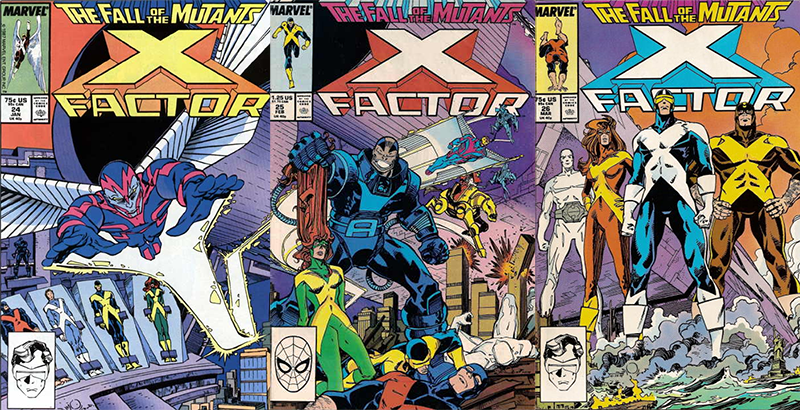
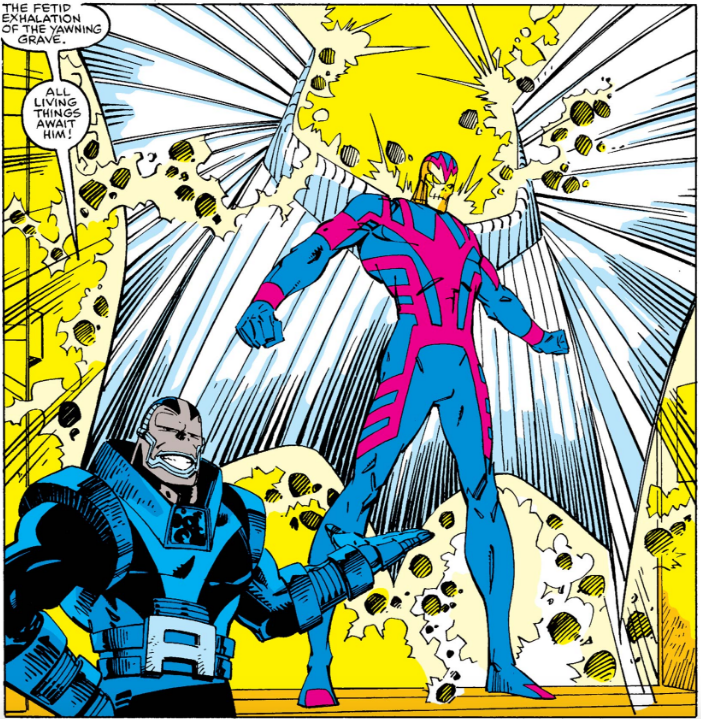
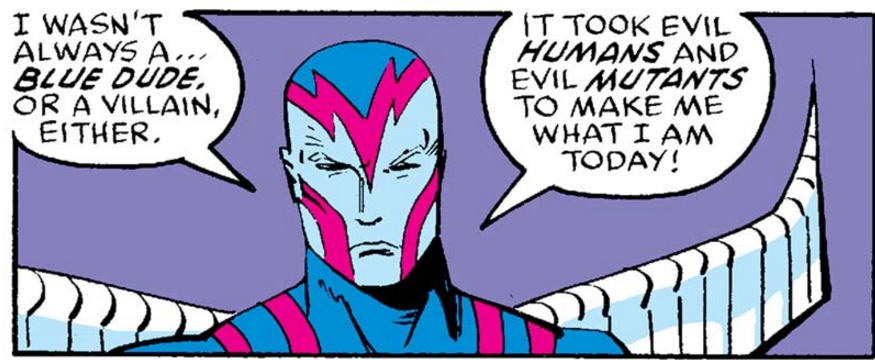

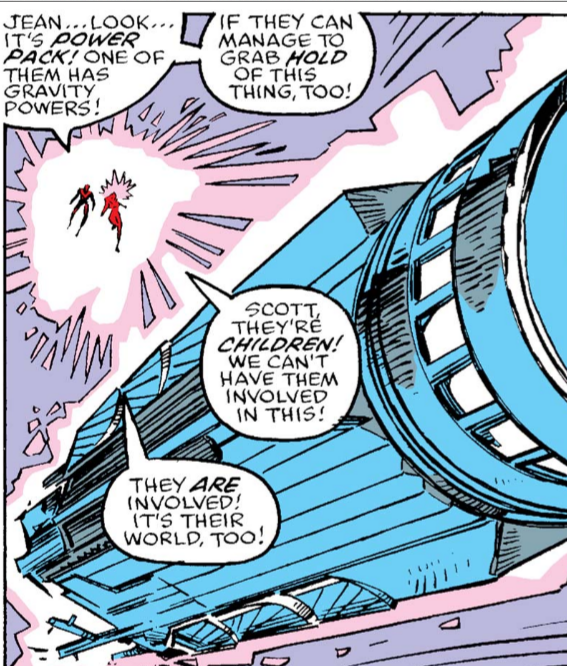
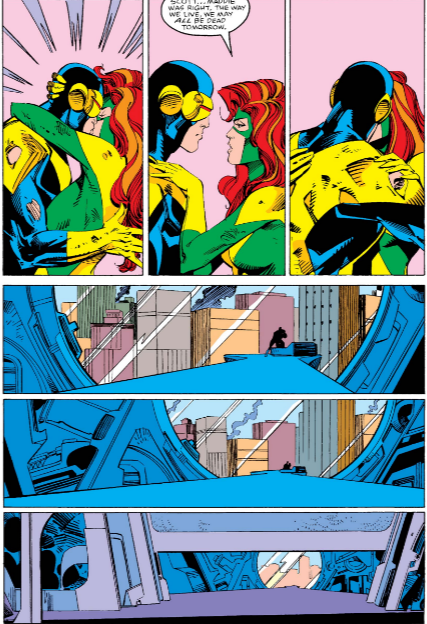
The interesting thing about the Captain America tie-in is that it’s right in the middle of Gruenwald’s famous “The Captain” storyline where Rogers has resigned and been replaced, and John Walker has taken his place, working with Freedom Force, of all groups.
There’s a great scene where Famine uses her powers on the Falcon and nearly kills him. So it’s still a random tie-in, but Gruenwald makes it work.